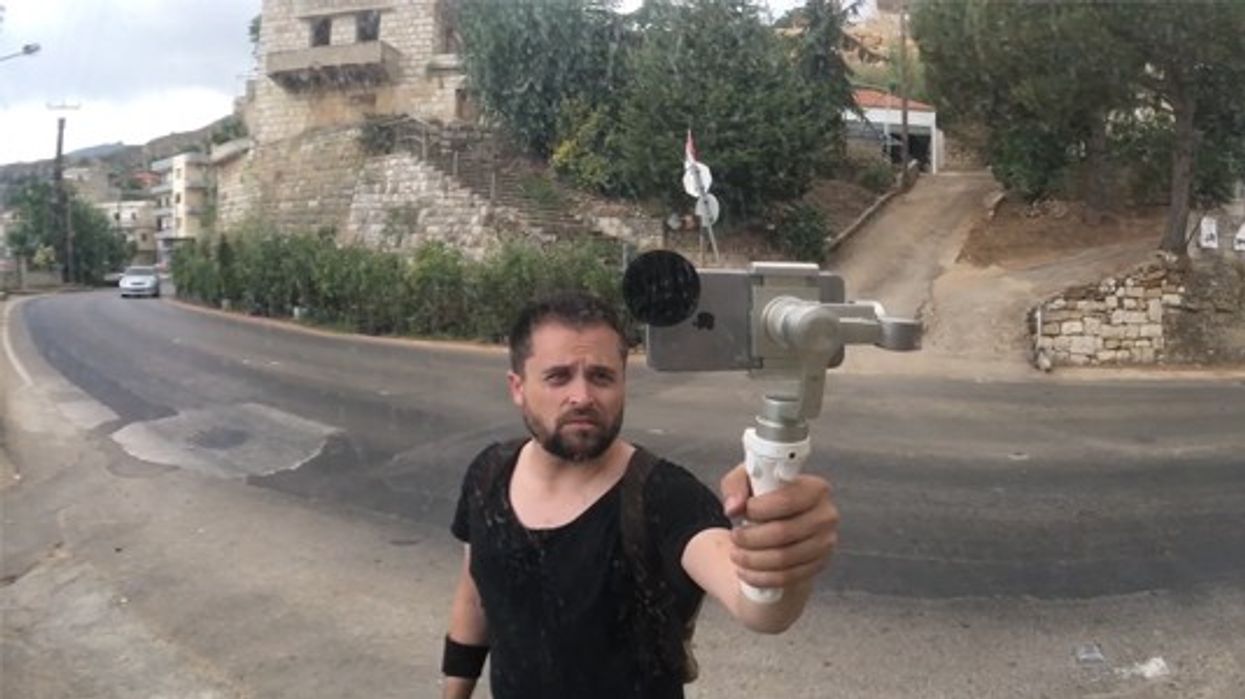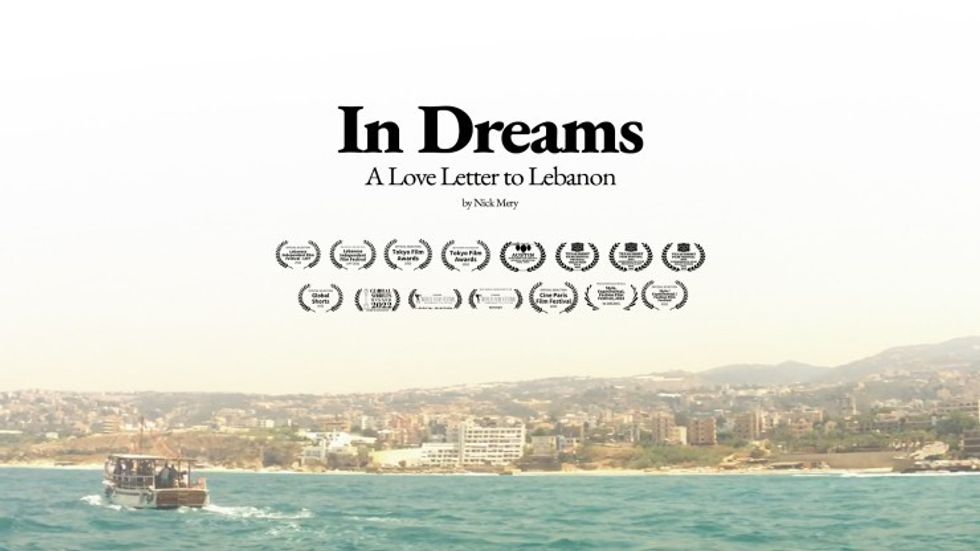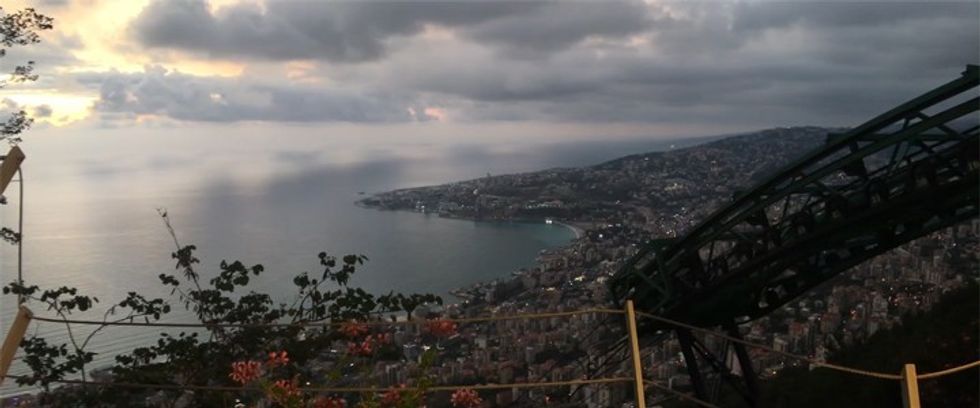5 Steps for Making an Award-Winning Documentary on Your Cellphone
Documentary filmmaking can be daunting, but it doesn’t have to be expensive.

This post was written by Nick Mery.
In the summer of 2018, I was awarded a cultural scholarship by the American-Lebanese Heritage Foundation that included an all-expense paid pilgrimage to the village of my great-grandfather in Lebanon. As a filmmaker, I immediately began assessing how to properly capture my experience—and more importantly, a realistic approach to producing high-quality content with a minimal setup.
After the explosion in the port of Beirut in 2020, I felt that my footage best served as a time capsule for the beauty and strength of Lebanon, and so I put together a five-minute documentary titled In Dreams, and released it into the film festival circuit in June of 2022.

As of November, the film has won awards in Lebanon, Tokyo, and Los Angeles, as well as garnering a distribution deal via Select Service Films.
Here are five steps to making an award-winning documentary with your cellphone.
Step 1: Prepare Accordingly
Filming in a region like the Middle East requires awareness of self and space. Drawing massive amounts of attention to yourself while traveling is a recipe for danger. Reading the room, respecting the customs of the land, and protecting yourself and your gear should be at the forefront of every decision you make.
For me, this translated to a minimal setup that could easily slip in and out of sight.
Drawing inspiration from Sam Baker’sTangerine (a feature-length film shot on an iPhone 5), I pulled together a travel-friendly cinema kit—an old iPhone 6S+, theMoondog Labs anamorphic lens (with ND filters), a DJI Osmo Mobile Stabilizer, a monopod with cellphone attachment, and the FiLMiC Pro app.
I had tested this at home, but would push it to the limits throughout the next two weeks—and thankfully, every piece returned in working order.

Step 2: Stay Present
As artists, it’s a common occurrence to throw ourselves into work, fully enveloping our senses within the camera. Preparing, adjusting, clicking, reaching, balancing—all of these come at the cost of being present. I recall dumping footage at 3 a.m. in the lobby of the hotel, exhausted and dreading having to wake up in a few hours to start another day’s worth of exploring. It was at this moment I allowed myself to relax—and more importantly, remind myself that the footage I was capturing wouldn’t mean anything if I wasn’t even enjoying it.
You owe it to yourself, as well as the film, to experience the world you are capturing.
Step 3: Embrace Boring
Documentary filmmaking requires a hunter’s mentality—the discipline of sitting still and waiting for your prize. The film I wanted to capture was one that revolved around movement—crowds gathering, traffic crawling, boats rocking—all in motion with the pulse and energy of the world around us.
What this realistically meant was finding opportunities—like sitting in the front seat of the bus and filming everything I saw for hours. Embracing the boring yielded shots of other vehicles, differing landscapes, and a lot of opportunity to learn my gear, including this capture:

Step 4: Expand Your Reach
There is a lot of pride to be had by gunning for big awards—best feature film, best documentary, and best director—all exist to celebrate the incredible feats of producing exemplary work.
But to quote Arthur Schopenhauer, “Talent hits a target no one else can hit. Genius hits a target no one else can see.”
The most impactful decision that I made for In Dreams was whittling two weeks’ worth of footage into a five-minute, short documentary, a seemingly impossible task that led to opening the doors of award-winning, international acclaim.
A film that lives within the five-minute timeframe can’t be defined by any traditional standards, and therefore cannot be limited to a specific audience. In Dreams has won six awards at six different festivals, in five different markets around the world:
- Cannes World Film Festival (France) - Best Mobile Phone Short Film
- Lebanese Independent Film Festival (Lebanon) - Best Documentary
- Tokyo Film Awards (Tokyo) - Best Short Documentary (silver)
- Texas Short Film Festival (San Antonio) - Best Experimental Film
- Style / Fashion / Experimental Film Festival (Los Angeles) - Best Use of Sound & Music
- Global Shorts Festival (Los Angeles) – Award of Excellence
All of these accolades can be attributed to the specific choice of making a five-minute film. You don’t have to think outside the box of filmmaking—just make the box (of your film) a little bigger.
When submitting to festivals, look for different regions of the world, and for different categories, in order to maximize opportunities.
Step 5: Trust Yourself
The best advice I ever received in film (and maybe in life) was from a salesperson at a camera store in Los Angeles. He told me, “Someone will always be driving a nicer car than you. What matters is how you drive the one you’ve got.”
Apply this toward your project. Every decision you make will lead to a new piece of work being created. My decisions to shoot small (on a cellphone), produce short (a five-minute film), and abandon a traditional narrative (leaning into experimental) ultimately led to a distribution deal, as well as a renewed sense of enthusiasm about the art of filmmaking.
Honor your tools, your time, and your instincts—and leave the rest to the audience.

Nick Mery is a Lebanese-American artist residing in San Antonio, TX.
You can follow him on social platforms - @merykid











